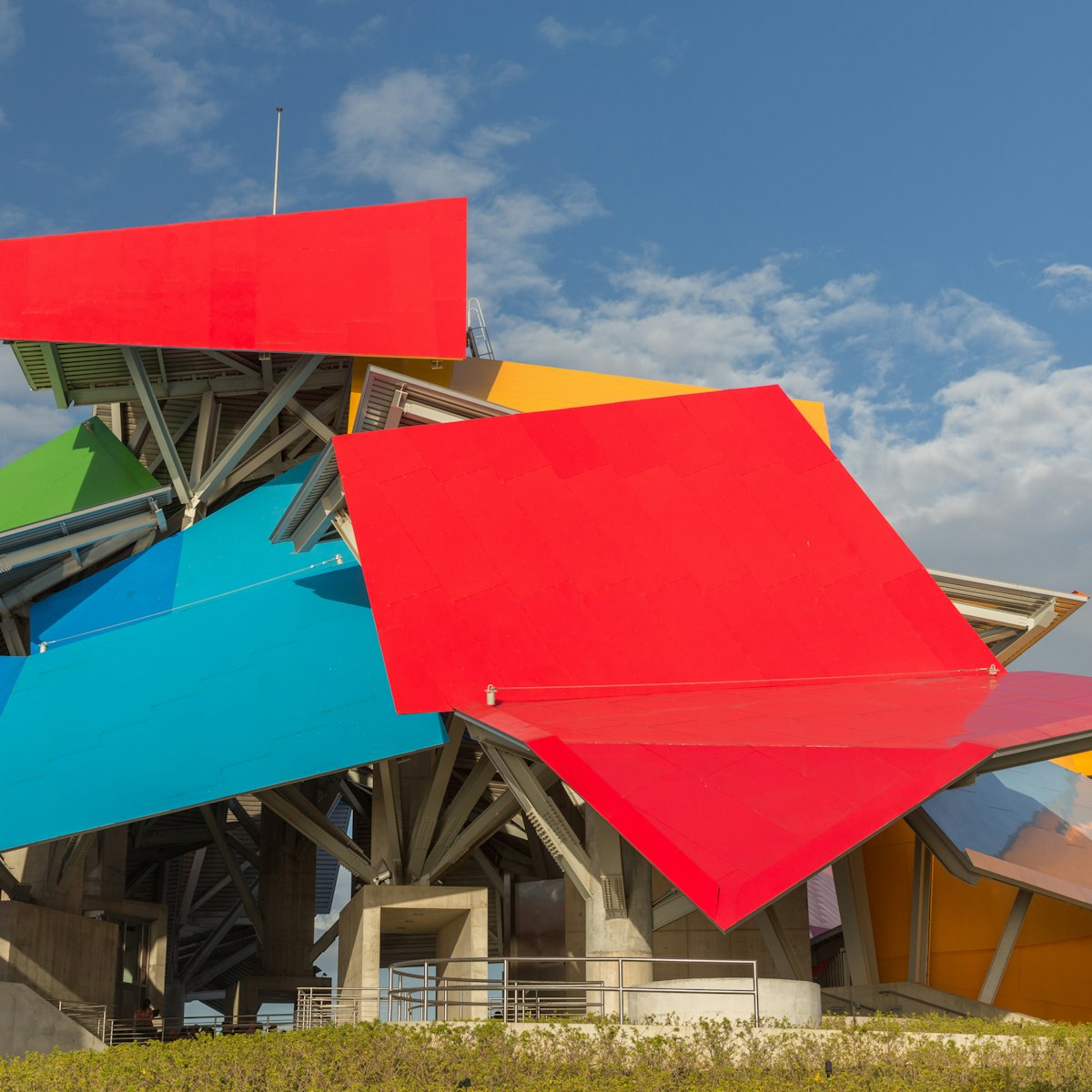Founded on August 15, 1519, by Spanish conquistador Pedro Arias de Ávila, the city of Panamá was the first European settlement along the Pacific. For 150 years it flourished as Spain exported Peruvian gold and silver to Europe via Panamá. In 1671, Captain Henry Morgan sacked the city and it was relocated to the present-day Casco Viejo. Today much of Panamá Viejo lies buried under a poor residential neighborhood, though the ruins are a must-see.
The center of power resided at the Casas Reales, a complex ringed by timber ramparts and separated from the city proper by a moat. Within the complex were the customs house, the royal treasury, a prison and the governor's house. Despite the obvious historical importance of the site, past governments have allowed sections of the property to be used as a landfill and for horse stables. Only scattered walls remain of the once-impressive structures.
The Catedral de Nuestra Señora de la Asunción, built between 1619 and 1626, is the best-preserved building of the ruins. In traditional fashion, it was designed so that its two side chapels gave the cathedral a cross-like shape as viewed from the heavens. The bell tower was at the back of the church and may have served double duty as a watchtower for the Casas Reales. The main facade, which faced the Plaza Mayor (Grand Plaza), is gone – only the walls remain.
Also facing the Plaza Mayor were the Cabildo de la Ciudad and the Casas de Terrín, houses built by one of the city's wealthiest citizens, Francisco Terrín.
Immediately north of the cathedral are the massive ruins of Casa Alarcón, the town's best-preserved and largest known private residence, which dates from the 1640s. Just north of the former residence is the Iglesia y Convento de Santo Domingo, the best-preserved church of the ruins. The convent dates from the 1570s; the church was built 20 or more years later.
Arriving a decade or so after the Dominican friars were the Jesuits, who built the Iglesia y Convento de la Compañía de Jesús, whose stone ruins are likewise visible today. Just west of the Jesuits' facilities are the spacious ruins of a church and convent, the Iglesia y Convento de la Concepción, which were erected by the nuns of Nuestra Señora de la Concepción (Our Lady of the Conception). Most of the ruins, which cover the better part of two blocks, were part of the church – little remains of the convent.
Between the nuns' church and the sea was the city's sole hospital, the Hospital de San Juan de Dios. Unfortunately, much of the hospital's remains were scattered when Av Cincuentenario and a side road were put in. Also bordering the avenue, two blocks west of the hospital's ruins, are the remains of the Iglesia y Convento de San Francisco, the facilities erected by the Franciscans. The church faced the sea and stood on a massive base.
Continuing two blocks west along Av Cincuentenario, you'll arrive at the ruins of the Iglesia y Convento de La Merced. Erected by Mercedarian friars in the early 17th century, the buildings survived the fire that swept the city following Morgan's assault. However, the church's facade is missing because the friars dismantled it and moved it to Casco Viejo, where it can be seen today.
Further west and paralleling the modern bridge is the Puente del Matadero, a horribly over-restored stone bridge that took its name from a nearby slaughterhouse, and marked the beginning of the Camino Real to Portobelo. A much more significant bridge is the Puente del Rey, which is visible from Av Cincuentenario near the northern edge of town. Built in 1617, it may be the oldest standing bridge in the Americas.
About halfway between Puente del Rey and the Iglesia y Convento de Santo Domingo lies the Iglesia de San José, which belonged to the Augustine order. Marking this building as special were its vaulted side chapels, an architectural feature seldom seen in Panama.
Enter via the entrance furthest west to access the visitor center and museum. The terrain is extensive and best suited to able walkers. Golf cart tours are sporadically offered when there are enough guests to fill the cart.








